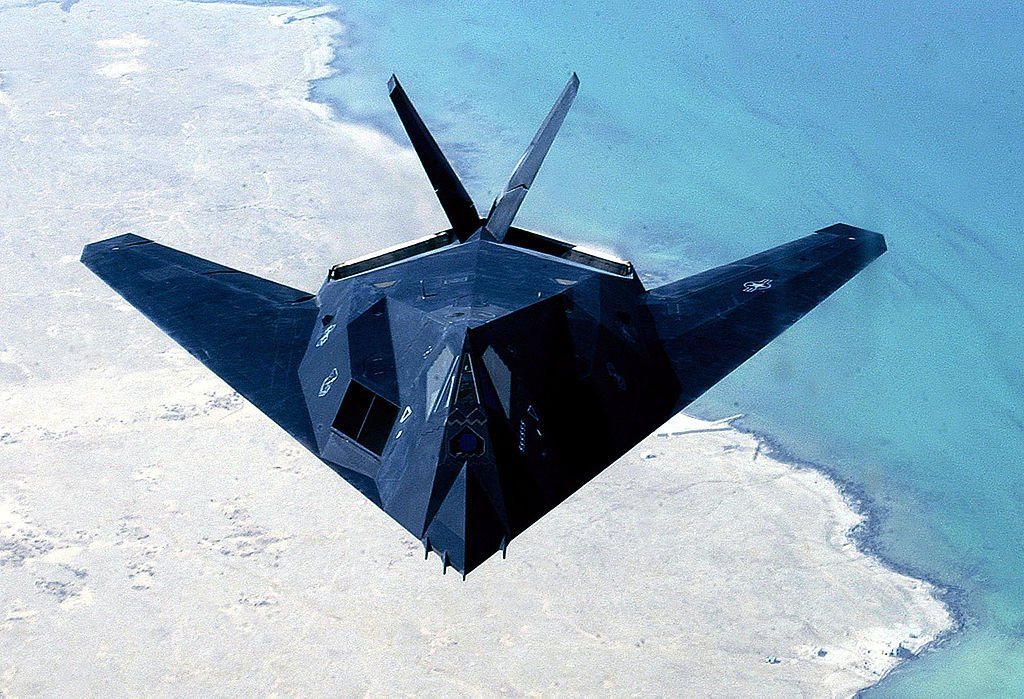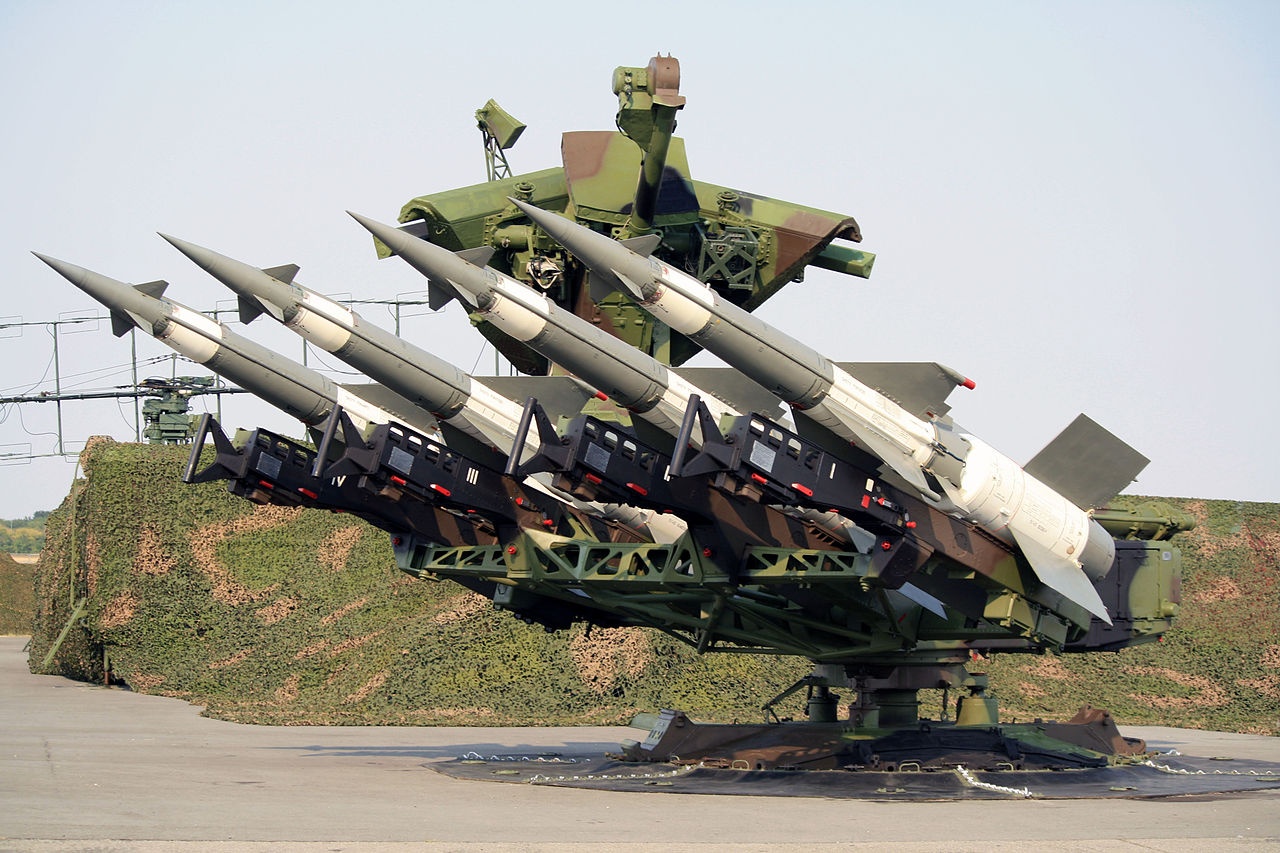‘Unfortunately, on the day Vega 31 would be taken out of the sky, the [EA-6B] Prowlers were grounded due to weather. The decision was made for the F-117s to fly their strike mission unsupported,’ Chris Morehouse, USAF Aerospace Engineer
The urgent national need for a jet fighter that could operate entirely undetected by the enemy led to the development of the F-117 Nighthawk. It was developed quickly and in total secrecy, in the traditional Skunk Works style (Skunk Works is Lockheed Advanced Development Projects in Burbank, California).
The “Skunk Works” was given a contract in 1978 to begin manufacturing the F-117A. Just thirty-one months following the full-scale development decision, on June 18, 1981, was the maiden flight over the Nevada test ranges. Wright-Patterson Air Force Base (AFB), in Ohio, used streamlined management of the Aeronautical Systems Center to quickly deploy the aircraft by combining breakthrough stealth technology with concurrent development and production.
Deliveries of the F-117A began in 1982 and ended in the summer of 1990. The 4450th Tactical Group (later 49th Fighter Wing at Holloman Air Force Base, New Mexico), Air Combat Command’s lone F-117A unit, achieved operational capability in October 1983.
F-117As performed over 1,300 missions and achieved direct hits on 1,600 high-value targets in Iraq during Operation Desert Storm in 1991. The only U.S. or coalition aircraft to strike targets in Baghdad’s downtown was that one.
To help NATO’s Operation Allied Force, 24 F-117As were sent to Spangdahlem AB in Germany and Aviano Air Base in Italy in 1999. On March 24, 1999, the aircraft led the first-ever Allied airstrike against Yugoslavia. On March 27, three days later, one F-117A (AF ser. no. 82-0806) was lost by enemy action.

How were the Serbs able to shoot down an F-117 stealth aircraft?
‘Through a combination of Complacency, Strategy, and Luck,’ Chris Morehouse, US Air Force Aerospace Engineer, said on Quora.
‘First the Complacency. This was on the part of the US Air Force, and joint allied forces. The routes used by the F-117s during the shootdown had been flown previously multiple times. This is contrary to the F-117 operations in the 91 war where they flew into Baghdad, never repeating the same inbound track consecutively.
‘Perhaps this was due to overconfidence in their equipment, and air superiority. During Operation Allied Force, the NATO air campaign, it was standard operating procedure (SOP) for all strike missions to be accompanied by electronic warfare aircraft [EA-6B Prowlers]. These aircraft flew with strike missions to detect, jam, and destroy enemy radar installations. Because of these aircraft, it was difficult for the Yugoslavian anti-air forces to operate their radars and get target-quality tracks on even conventional military aircraft. Keep in mind, during the 78 days of Operation Allied Forces we flew 38,004 air sorties and lost only 2 aircraft to enemy fire. The Prowlers were a big part of that unprecedented record.
‘Unfortunately, on the day Vega 31 would be taken out of the sky, the Prowlers were grounded due to weather. The decision was made for the F-117s to fly their strike mission unsupported.
‘Worse yet, the Yugoslavian anti-air forces knew that the Prowlers were grounded, and knew that the F-117s were going to fly a strike mission anyway. How did they know? Because the Serbs had spotters and human intelligence assets in Italy, where the strike missions were flying from. They had also compromised NATO communications in the area, and had civilian sources in Italy feeding them intelligence who had access to operational information. In short, the NATO forces had a massive failure in operation security, OPSEC, which was feeding valuable data to the enemy. The Serbs knew the strike was coming, knew the general route, and knew the F-117s would be flying without electronic warfare support.
‘It is important to note that the F-117A is a very lean aircraft. It has no radar of its own. When flying for penetration all of its antennas are retracted. It had a single system that could function as a radar warning receiver, but the antennas were not exposed during a strike mission. As such it has no way of detecting search and track radar on its own. Simply put, operating alone, it is effectively blind.’
Morehouse continues;
‘Now let’s discuss the Strategy.
‘The Serbs were leaning every available advantage they could to accomplish a shootdown of American aircraft. They knew war was not a popular option for the US civilian population, and it was perceived that if they could shoot down some American aircraft, they could turn public opinion against the air war. A particularly valued prize would of course be one of the coveted “Stealth Fighters”. As such, they worked diligently to set up anti-air ambushes for NATO aircraft, particularly hunting for the F-117As. How did they do this?
‘For these ambushes, they employed two radar systems. First the P-18 “Spoon Rest D” early warning radar. This radar is a Soviet Union radar system that operates in the VHF frequency. Typical it can detect a fighter aircraft out to 200 nautical miles. The Serb discovered that by setting it to its absolute lowest frequency, and thus largest bandwidth, they could detect the F-117As. However, in these settings the radar cannot provide very good information on the F-117s, and the “early warning” radar could only detect them within 15 miles. This is a very poor detection range indeed, however, if you just so happen to know the route your enemy is flying, it is enough to let you know when they are getting within range of your other systems.
‘Even when the P-18 is operating at optimal performance (not at the absolutely lowest frequency) and against a conventional aircraft, it can still not produce a precision track of a quality to guide a weapon on anything more than a kilometer or so away. That is why these systems are considered ‘early warning’ radar. They are not meant to guide weapons. This brings us to the next system the Serbs used.
‘For their anti-aircraft weapon system, they had the S-125, or SA-3 Goa to NATO. The S-125 had three radar systems; The P-15 Flat Face, SNR-125 Low Blow, and PRV-11 Side Net.
‘The P-15 was a C-band target acquisition radar. Nominally it had a detection range for a fighter aircraft out to 150 miles. Against the F-117s it was completely worthless. It could not detect them, even flying overhead.
‘The SNR-125 was the fire control radar, intended to guide the missiles onto their targets. This had two modes of operation for detecting aircraft, essential two different radar bands. Nominal it could detect and track a fighter aircraft between 25–50 miles out, depending on the mode of operation and conditions.

‘The PRV-11 was used as a ‘height finder’ to get an accurate read on a target’s altitude.
‘All these radars were paired with a quad missile launcher carrying the V-600 missile. A two-stage solid-fueled surface-to-air missile with a max range of about 15 miles and a minimum engagement range of a little more than a mile.
‘This SAM system is not usually considered a mobile missile system. But the Serbs had trained diligently, and by only arming their quad missile launchers with two missiles each they were able to relocate the missile system in 90 minutes. Doing so meant they could set up ambush positions with this missile system, and then take down and relocate. So, if a route was flown one day and there were no missile systems detected in the area, the Serbs could be operating in that area just hours later.
‘The Serb had attempted to set up ambushes in this way for the F-117s two times previous to the actual shoot down. They would get an indication of a pending strike mission, and move their missile batteries into place to intercept the suspected routes. The P-18 would be able to detect the F-117As when they got within 15 miles, as was mentioned before. Even with the Prowlers flying, the P-18 did not register on their systems as a radar system when operating at their lowest frequency.
‘With the P-18 indicating the F-117s were in the area, they would time for a possible intercept and when they believed the F-117s were close enough, activate the SNR-125 radar trained in the direction of the incoming F-117s. They limited the amount of time they kept the SNR-125s active due to the risk of being detected by the EW aircraft and then hit with Anti-Radar missiles. On both previous attempts, the SNR-125 was unable to detect or track the F-117s. This brings us to the last bit.
‘Luck.’
Morehouse explains:
‘On the day of the shoot-down, as has been mentioned, the Serbs got intelligence that the F-117s would be flying a strike mission without the support of the Prowlers. Being well drilled in setting up these ambushes, they positioned their S-125 missile system into position on the F-117’s suspected approach.

‘The P-18 radar detected the F-117As when they were about 15 miles out. The Serbs activated their SNR-125 radar and detected…… nothing. Looks like they were going to miss out again.
‘Except for the fact that they knew no Prowlers were in the air. That being the case, they decided to try again. They activated their SNR-125 radars another time.
‘Meanwhile, aboard Vega 31 the Air Force pilot [Lt. Col. Dale Zelko] was preparing to drop his ordnance. His weapon bay doors opened, exposing his very radar-reflective bomb bay interior.
‘The SNR-125 radar detected the F-117A five miles distant. We should point out that this strike mission had 3 F-117s in it, and they only were able to target one of them. This reinforces the fact that they were ONLY able to do so because at that time Vega 31’s weapons bays were open.
‘The Serbs fired at least 2 missiles at Vega 31. The F-117A had no indication it was being painted by a targeting radar, but the pilot did visually acquire two missiles that were launched against him. The first missile flew right by the aircraft, passing it overhead. A close miss. The missiles passing buffeted the stealth fighter but it did not detonate, its proximity trigger likely not detecting the F-117 to initiate detonation. The second missile that approached also failed to hit the F-117 but it DID detonate in close proximity.
‘The F-117 took blast and fragment damage. Flight control was lost, and the pilot was forced to eject.
‘Complacency, Strategy and Luck.’
Photo by U.S. Air Force, Srđan Popović via Wikipedia and Petar Milošević via Wikipedia

